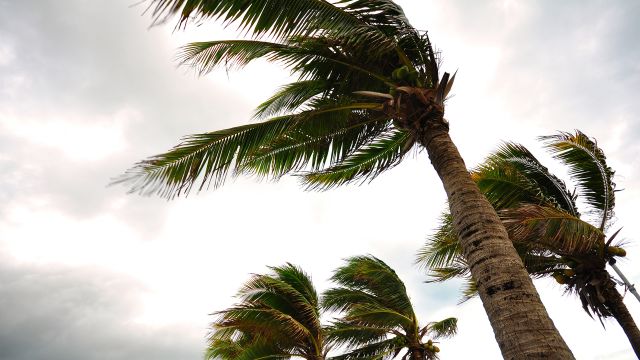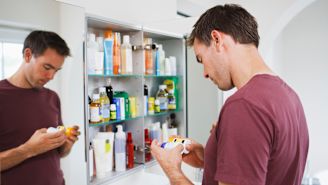Mention September 11 to most Hawaii residents, and the date will conjure a national tragedy. But to some, particularly on Kauai, that day is also set in memory for a different reason. It’s when Iniki, the most destructive hurricane to strike Hawaii on record, made landfall in 1992. The storm killed at least six people, injured more than 1,000 and cost billions of dollars in damage.
In recent years, Hawaii has seen active hurricane seasons cause significant harm across the islands. While none made a direct hit, there were several close calls, along with tropical storms that did make landfall, causing flooding on Big Island, Maui and Kauai.
Hurricane preparedness is always important in Hawaii, and residents should take extra care as the Pacific Hurricane season arrives. The season begins May 15 in the Eastern Pacific and June 1 in the Central Pacific, peaks in late summer and runs through the end of November.
"You will usually have plenty of notice when a hurricane may hit your area," says R. Preston Wendell, MD, FACEP, Medical Director for Trident Health Emergency Departments in Charleston, South Carolina. "Take it seriously and be as prepared as you can be."
What makes a hurricane
Hurricanes are exceptionally large storms that almost always form above water and can gradually make their way toward land. They commonly involve fast winds, lots of rain and rising tides, and may change speed or course over time. Hurricanes weaken once they hit land, but high winds, heavy rain and flooding can still wreak havoc in the days that follow.
The continental United States’ West Coast does not get hurricanes for two primary reasons. First, hurricanes that form in the northern hemisphere in the Pacific Ocean blow west or northwest, away from the mainland. Second, hurricanes are fueled by warm waters—and the cool waters along the Pacific coastline sap storms of their strength.
Hawaii, on the other hand, due to its ocean location, sees its fair share of tropical storms and hurricane near-misses, along with the occasional direct hit—like Hurricane Iniki.
If you hear there's a hurricane watch in Hawaii, it means a storm is possible within 48 hours. A hurricane warning means one will likely occur within 36 hours, in which case it’s important to have a plan. The Central Pacific Hurricane Center, under the National Oceanic and Atmospheric Administration (NOAA), gives current projected cyclone activity within 48 hours.
Hurricane winds are categorized on a 1 through 5 basis using the Saffir-Simpson Scale. A Category 1 hurricane indicates winds between 74 and 95 miles per hour (mph). Some damage can be expected, from snapped trees to power outages.
On the other end of the spectrum, a Category 5 hurricane means winds will be at least 157 mph, and damage will almost certainly be catastrophic, rendering affected areas uninhabitable for long periods of time. Hurricane Iniki was a Category 4 storm, with winds that hit 145 mph.
Devising your plan
Long before you make preparations for any specific hurricane, you should take time to create an overall emergency plan with your family. Learn your evacuation route and designate a place to stay if it becomes too dangerous to shelter at home. Arrange how you’ll communicate if there’s a power outage and find out how to get alerts and updates—such as via social media or radio broadcasts—from local authorities. Make sure your whole family knows the plan.
Crucially, you should consider family members with different needs. “If you are responsible for young children or an elderly parent, the situation can change from manageable and survivable to dangerous really quickly,” says Dr. Wendell.
For seniors or people with health or mobility issues, be aware that extreme weather may worsen health conditions. You should anticipate an extended period of time during which you may not have access to regular care. If you or a loved one uses an electric medical device, call your fire department and electric company before a hurricane to alert them that you have it, and consult with the manufacturer to see if it can run on batteries or a generator. (Always check a device's settings before you begin using it again after a power outage.)
Make sure any designated shelter is able to accommodate your loved one's medical needs. If they are in a care facility, ask the managers about their hurricane policy. "They may expect you to transport your family member," says Wendell. "You need to know what their plan is and what they expect of you."
Plan for your pets, too. Keep dogs and cats close and make sure they're wearing tags or they're microchipped. Since certain evacuation centers won't allow animals, contact area shelters or your local department of animal control beforehand to ask about accommodations.
Whether you're staying or going, secure loose outdoor items like garbage cans and children's toys if you have time. You may also want to look into acquiring a generator in case you're without power for a long time. If it seems like you'll evacuate, the Centers for Disease Control and Prevention (CDC) advises you to shut off your main gas valve and main power switch.
What to have on hand
Should you stay in place, it's best to have certain supplies with you. These will sustain you and your family if you're homebound for a period of time or if certain utilities (such as electricity or water) or services (supermarkets or drugstores) aren't available. Key provisions to have on hand include:
- Water: The CDC recommends at least 5 gallons per person, which should last up to five days. Buy supplies, like iodine tablets, to help ensure the safety of your drinking water.
- Food: Non-perishable goods are ideal. Make sure they'll last up to five days. Don’t forget baby formula if you have an infant.
- Medications: Keep your remaining supply in a watertight container.
- Personal items: These include soap, hand sanitizer, toothbrushes and toothpaste, baby wipes, diapers and tampons or pads.
- Safety supplies: Have a first aid kit, face masks, radio, fire extinguisher, sleeping bags and at least one flashlight. Don't forget extra batteries. Make sure your carbon monoxide detector is working.
- Contact lists: Phone numbers and email addresses are key for reaching family, friends or help. Write them down or program them into your phone (which should be fully charged, of course).
If an evacuation is pending, you may want to have a go bag set with these items. Remember to fill your car with gas and be prepared to take off should an evacuation be called.
When to go
If a hurricane is approaching, when should you stay home and when should you listen to officials and move to a safer area?
In short, "If they recommend you should go, you should go," says Wendell. Don't ignore evacuation orders. Shut off your gas, electricity and water if there's time. Take essentials only—your phone, IDs, medications, money and go bag—and leave.
Officials may also tell you to wait it out at home, which can be safer in some circumstances. If that's the case, remain indoors during the hurricane and stay tuned to news reports.
When the hurricane's passed
If you left town or were evacuated, you may be tempted to return home immediately after the storm is over, hoping to resume life as usual, but that might not be possible. "You may think it's fine to go back," says Wendell. "But trees could still fall, there may be debris everywhere, roads may be damaged and power lines may be out. It simply may not be safe to just drive up to your house and check on things."
Wait for authorities to give the go-ahead, and heed their instructions closely. Steer clear of wreckage and debris, avoid downed power lines and stay away from floodwater, which may spread disease or carry hazardous chemicals. Even if it seems shallow, just a few inches of water can sweep you off your feet, and 12 inches can move a small car.
Once you've arrived home, let your loved ones know you're safe and take photos of damage for insurance claims. "Then you're going to want to check your gas line, your water," says Wendell. If there was a flood, throw out food that may have been contaminated and don't turn on dampened electrical devices. If you use a generator, be aware of the potential for carbon monoxide poisoning and keep it far from the house—at least 15 or 20 feet.
Finally, whether you remained home or evacuated, understand that services may take a while to start up again. "Grocery stores are going to be down. Pharmacies are going to be down. Gas may be out," says Wendell. "Hospitals are going to be extremely crowded because many doctors’ offices will be closed." Police and emergency medical services may be limited, too, he adds. Depending on the damage, it could be a long time before they're back up to speed.
In that case, says Wendell, "Pay attention to what your local government is saying about what services are available, what services are closed and when closed services will reopen."
Guidelines like these—listening to officials, being cautious and preparing however you can—will help keep you safe through the next hurricane and the others to come.







